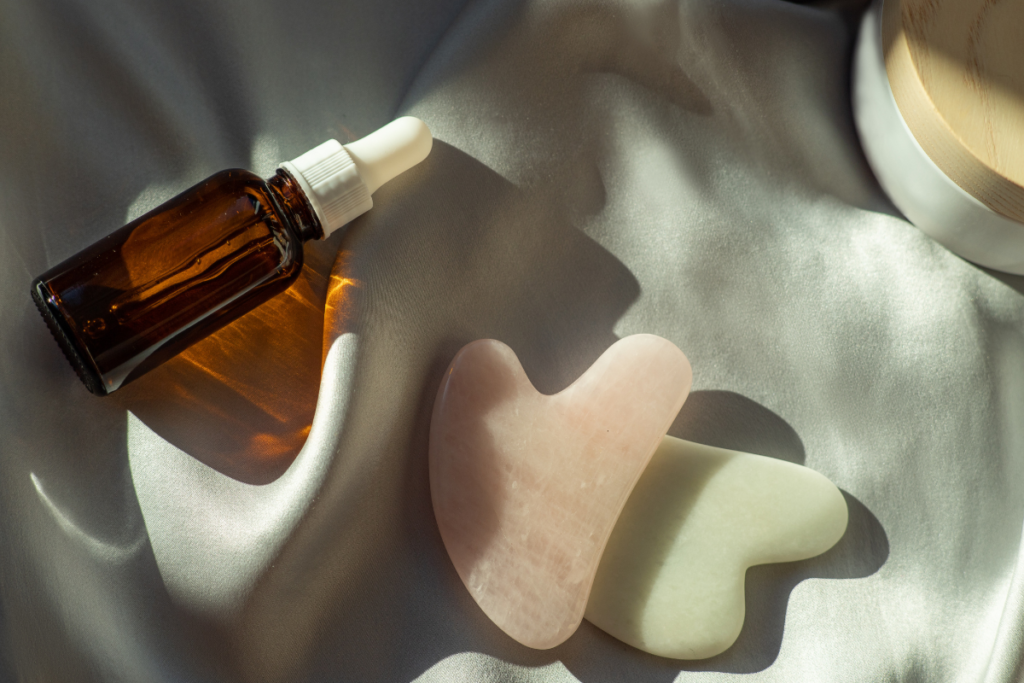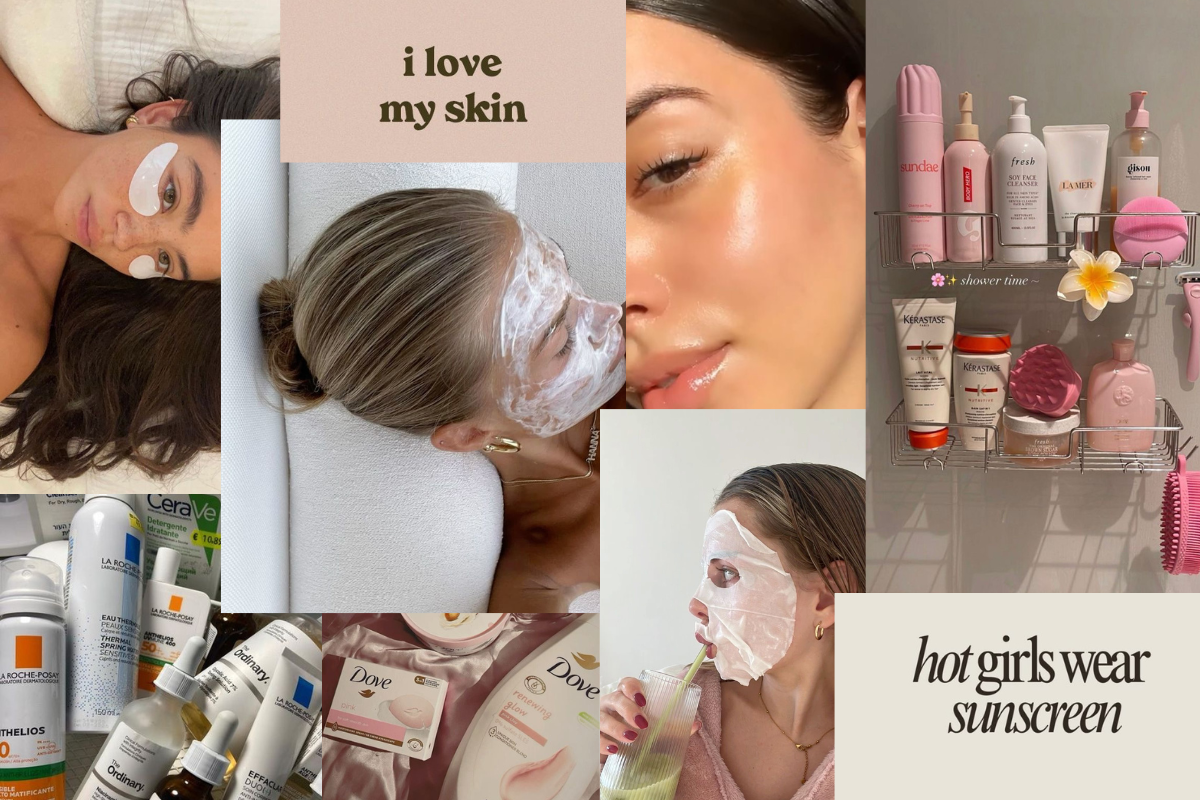Building a Solid Skincare Routine: Your Daily Ritual
- Beauty

- Written byYour Local It Girl
- |01/01/2024
Taking care of your skin is more than just a beauty ritual; it’s a crucial aspect of overall health. Our skin, the largest organ in the body, plays a vital role in protecting us from external threats and maintaining bodily functions. In this blog post, we’ll explore the basics of building a solid skincare routine, addressing various skin issues and considerations.
Section 1: Understanding Your Skin
1.1 Identifying Skin Type
Skin types are often classified into four main categories: normal, oily, dry, and combination. Identifying your skin type can help you choose appropriate skincare products and develop a skincare routine tailored to your specific needs. Here’s a brief description of each type and how to determine yours:
- Characteristics: Dry skin lacks moisture and may feel tight, rough, or flaky. It can be more prone to fine lines and wrinkles.
- How to identify: Dry skin may have patches of redness, irritation, or rough texture. It may also be more sensitive and show signs of dehydration.
- Characteristics: Oily skin tends to produce excess sebum (oil). It may appear shiny, especially in the T-zone (forehead, nose, and chin), and is prone to enlarged pores.
- How to identify: Oily skin often has a greasy feel, is prone to acne and blackheads, and may require oil-absorbing products throughout the day.
- Characteristics: Normal skin typically has a balanced level of moisture, is not overly oily or dry, and has a smooth texture.
- How to identify: Normal skin feels comfortable, with few or no blemishes. Pores are not enlarged, and there is a healthy, radiant complexion.
- Characteristics: Combination skin is a combination of two or more skin types. Commonly, it’s a mix of oily and dry areas. The T-zone is often oily, while the cheeks may be dry.
- How to identify: Combination skin requires a customized approach, as different areas of the face have different needs. The T-zone may be prone to shine and blemishes, while the cheeks may feel dry and tight.
The Bare-Faced Test:
- Wash your face with a gentle cleanser.
- Pat your face dry and leave it bare, without applying any products.
- After an hour or so, observe how your skin feels.
- Normal skin will feel comfortable and balanced, oily skin will appear shiny, dry skin may feel tight or flaky, and combination skin will vary in different areas.
Blotting Paper Test:
- Press a blotting paper against different areas of your face.
- Oily skin will leave oil on the paper, dry skin may not leave much residue, and combination skin will vary in different zones.
Observation Over the Day:
- Observe how your skin feels at different times of the day. Oily skin may become oilier as the day progresses, while dry skin may feel drier.
Consult a Dermatologist:
- If you’re unsure about your skin type or have specific skin concerns, it’s always a good idea to consult with a dermatologist. They can provide a professional assessment and recommend suitable skincare products.
Section 2: Common Skin Issues
2.1 Dry Skin Woes
If your skin feels tight and lacks moisture, you likely have dry skin. Combat dryness by using a gentle cleanser and hydrating moisturizers to keep your skin feeling soft and supple.
2.2 Dealing with Itchy Skin
Itchy skin can be a sign of various issues, from dryness to allergic reactions. Choose skincare products designed for sensitive skin and consult a board-certified dermatologist for personalized advice.
2.3 Clogged Pores and Combination Skin
Combination skin poses a unique challenge with both oily and dry areas. Keep pores unclogged by using non-comedogenic products and maintaining a balanced routine.
Section 3: Addressing Specific Skin Conditions
3.1 Sun Exposure and Skin Cancers
Protecting your skin from the sun is crucial in preventing skin cancers. Use a broad-spectrum sunscreen with at least SPF 30 and reapply every two hours, especially if spending extended time outdoors.
3.2 Atopic Dermatitis and Chronic Skin Conditions
Atopic dermatitis, a form of eczema, and other chronic skin conditions require extra care. Consult a dermatologist for a customized approach and use fragrance-free, hypoallergenic products.
3.3 Understanding Skin Diseases
Be aware of various skin diseases and their symptoms. Early detection can make a significant difference. If you notice any abnormalities, consult a healthcare professional promptly.
Section 4: The Role of Products in Your Skincare Routine
4.1 Choosing a Gentle Cleanser
A gentle cleanser is the cornerstone of any skincare routine. Avoid harsh soaps that strip your skin of essential oils. Instead, opt for a mild, hydrating cleanser that leaves your skin feeling refreshed.
4.2 Importance of Board-Certified Dermatologists
When in doubt or facing persistent skin issues, consult a board-certified dermatologist. They can provide expert guidance tailored to your skin’s unique needs and address any concerns you may have.
Section 5: General Tips for Healthy Skin
5.1 Sun Protection
Shielding your skin from harmful UV rays is a year-round commitment. Incorporate sun protection into your daily routine to prevent premature aging and reduce the risk of skin cancers.
5.1 Supporting Your Immune System
A healthy immune system contributes to overall skin health. Maintain a balanced diet, stay hydrated, and get enough sleep to support your body’s natural defense mechanisms.
Conclusion
In conclusion, building a solid skincare routine involves understanding your skin, addressing specific issues, and choosing the right products. Remember, the journey to healthy skin is unique for everyone, so take the time to discover what works best for you. If in doubt, consult a dermatologist for personalized advice on achieving and maintaining radiant, healthy skin.
Related Posts
FOLLOW @YOURLOCALITGIRL
ELSEWHERE
0.2k
11k
Subscribers
0.2k
FOLLOW @YOURLOCALITGIRL
ELSEWHERE
0.2k
11k
Subscribers






